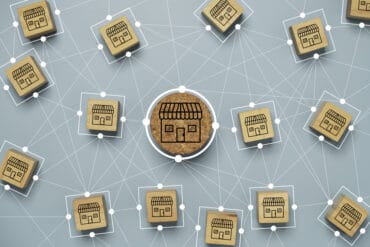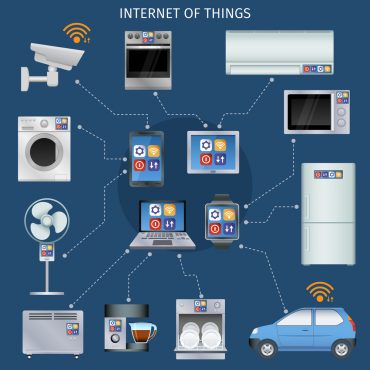
With open banking, each data element can be exposed as an API. The process is infinitely more efficient than other data access and sharing methods and has a lower carbon footprint.
As the dangers of climate change start to hit home for more and more people – from raging California wildfires to catastrophic floods in Pakistan – there’s a growing desire to integrate climate-friendly features in everyday digital experiences. Whether out of increased consciousness or because geopolitical changes and soaring energy prices are impacting their pocketbook, consumersand businesses are increasingly demanding more transparency on environmental impacts and seeking out greener solutions.
As a seasoned technologist, I have dedicated my career to help drive the evolution of open banking forward. I believe it can improve millions of lives by enabling a more innovative, resilient, and inclusive financial ecosystem, including using your financial data in entirely new ways. For example, one of the exciting innovations made possible by a financial ecosystem built on APIs (Application Programming Interfaces) is the ability to integrate climate consciousness with financial activity. Here’s a look at some of the possibilities.
Tracking your carbon footprint
Awareness is always the first step in changing behaviors, and there’s a growing appetite for solutions that help consumers make more environmentally-friendly decisions. In 2019, ‘sustainability’ was the top investment category for newly launched European VC funds.
Fintechs are hastening to respond to demand, from offering a free payment card made of wood (and donating most profits to reforestation) to crowdfunding solar energy products. One popular offering that leverages open banking is a tool that allows consumers to share carbon footprint data bi-directionally with their bank, giving them a more accurate picture of their personal environmental impact.
A great example of this use case was introduced by Germany’s Commerzbank, a leading international commercial bank that serves more than 11 million private and small business customers, as well as corporate clients, multinationals, financial service providers, and institutional clients.
Commerzbank is committed to becoming a “net zero” bank – trying to reach a neutral asset portfolio and supplier pool by 2040 – and has also developed services such as a personal CO2 calculator.
Banking clients enter personal information (think living expenses like utilities, vehicle and transportation use, shopping, diet, and more), and the CO2 calculator will give them an overview of their total emissions. If users adjust their habits, the app shows them how it’s impacting their carbon footprint.
What’s more, the data is leveraged for personal finance recommendations: the bank is able to offer additional value and an improved user experience while also encouraging more climate-friendly behaviors.
It’s important to note that APIs are the enabling technology for many of these sorts of digital products. Europe’s PSD2 open banking regulation mandated the use of APIs to open up financial data, and other regions have since followed suit or adopted a more market-driven approach.
Mark Boyd, founder of Platformable and lead author of a report on open sustainability trends, points out the impact of regulation on this growth: PSD2 Accounts and Payments APIs have enabled the greatest category growth in green digital payment and account solutions.
See also: Open Banking: Has Technology Outpaced Regulations?
Voting with your wallet
If building awareness is important, sustainable behaviors and real action will have the greatest impact. One early mover in creating API products that drive sustainability actions focused on consumer choices: KBC Open Banking & Insurance offers a Bicycle Loan API, which allows merchants to offer BNPL financing at check-out for cycling products.
I often like to say that in open banking, a rising tide lifts all boats, and this type of initiative is a perfect example: the merchant can boost sales and improve service, the customer has easier access to a green mode of transportation, the bank acquires new customers through the loans provided, and there’s one fewer commuter driving their car to work.
Of course, you may have noticed that many of these solutions focus on individual consumers. We know that the majority of greenhouse gases come from four high-impact sectors: industry, transport, energy use in buildings, and agriculture and land use. Only about 30% of green open banking solutions focus on these sectors, and Boyd notes there are still steps to take to achieve biodiversity goals or enable a circular economy.
The concept of a circular economy is simple in its essence: it is a model of production and consumption idea where waste is reduced or eliminated as resources are reused, shared, and extended past a linear use. (an example would be capturing agricultural waste, manure, or food waste to produce biogas used as fuel)
Schoolchildren around the world are familiar with the phrase “reduce, reuse, or recycle,” and some innovative players in the finance world are also making good on that promise. Banks can also play a role by extending credit to projects that support this circularity, and consumers can further push the needle through impact investment – such as selecting to invest in more sustainable options for their pension fund.
Commerzbank has been prototyping a sustainable supply chain platform. With their customers, they are testing a finance platform that could also monitor the supply chain’s environmental, social, and governance (ESG) ratings.
Opting for less wasteful IT architectures
It is well-known that organizations can reduce waste through green building initiatives or paperless communications. But of course, the digitization of practically everything has shifted our resource consumption from big buildings and reams of paper to energy-hungry data centers.
And this is where we see an interesting energy savings use case with APIs: our IT architectures themselves can reduce waste when we choose more efficient strategies. Consider that building an API can cost nearly US$ 30,000 on average, and a recent study shows companies often struggle to drive their use and reuse.
For obvious reasons, enterprises have a strong incentive to not waste time and resources rebuilding digital resources in siloed IT departments. And as APIs increase efficiency and agility in operations – from banks to supply chains to utilities and energy – they also have the power to help decrease IT’s carbon footprint.
APIs also offer the agility to innovate faster, so organizations can quickly integrate new services for their ecosystem. Even the type of API used can make a difference in terms of environmental impact: consider the difference between REST and event-driven APIs.
A REST API polls a server for information, and the server responds. This Q&A format is great when the information required is a single data point. But when you need real-time updates such as stock market data or information about a container as it crosses the globe, you can quickly get bogged down in polling madness as a device perpetually asks back and forth, “is it ready yet?”
With event-driven architecture (EDA), asynchronous or streaming APIs allow the server to acknowledge an API call and respond only when there is a new update. It may not seem like much, but it can have a significant impact over time: studies have placed the energy cost of data transfer and storage at somewhere between 3.1 and 7 kWh per gigabyte.
There’s a clear conservation argument for adopting APIs for open banking: historically, fintechs and other financial institutions have collected and aggregated data using screen scraping. A bot logs into a user’s account with their permission and hammers at a bank’s infrastructure to “scrape” data thousands of times faster than any human user ever would.
Bots also collect much more data than they really need. Even setting aside potential breakpoints and security risks, screen scraping is burdensome and resource-intensive for both sides.
With open banking, each data element can be exposed as an API, so an app can access a person’s current credit card balance, for example: securely, and only that data element at a specific point in time, depending on the user’s permission. The process is infinitely more efficient and has a lower carbon footprint.
It will take more than just IT infrastructure adjustments to address the environmental challenges we face. But I am encouraged by the enthusiasm for creative green solutions in the finance world.
A more composable, reusable IT architecture contributes to a circular economy on a micro level, and on a larger scale, enables the sorts of API-enabled solutions that just might change the world. From building awareness, to prompting changes to consumer habits, to financing cleaner supply chains and industry, banks that have the courage to open up can play a significant role in creating a more sustainable future.






























